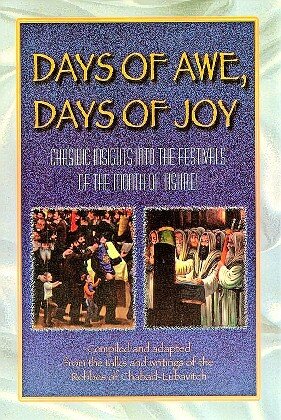High Holidays as a prayer-intensive experience
No other holiday season in the Jewish calendar is as prayer-intensive as Rosh Hashana and Yom Kippur, each with a unique prayer and liturgy imbued with the motifs of repentance and new beginnings.
Rabbi Chaim Friedlander zt’’l, the famed mashgiach of the Ponovezh Yeshiva, was a keen interpreter of the liturgy of the holiday season. His annual shiurim for many years focused upon the tefilot of the machzor, especially that of the various and diverse Amidot.
In 2004, Feldheim Publishers, in cooperation with the Friedlander family, issued a bilingual edition of Rabbi Friedlander’s shiurim of these tefilot entitled, “Rinas Chaim: Understanding the Tefilot of the Yamim Noraim”(regrettably, only a Hebrew edition remains available).
Within this volume is a wealth of commentary reflecting Rabbi Friedlander’s finest shiurim. These involve detailed interpretations of the entire Musaf Amidah service from the beginning brachot and the special insertions that are unique to the themes for this time of year, that penetrate to the very heart of the Amidah.
A detailed 40-page interpretation of the Birkas Kedushas HaYom is followed by an even more extensive, more than 100-page commentary of the heart of the Rosh Hashana Musaf service, keyed to the tri-partate of Malchuyos, Zichronos, and Shofaros. Each section is given a very special treatment.
In this writer’s opinion, this work is one of the finest ever published on the machzor liturgy.
To better understand where Rabbi Friedlander was coming from consider this: He was a student of the teachings of the great Rav Eliyahu Dessler and Rav Eliyahu Lopian, both eminent sages of blessed memory, whose works he later edited.
The next work to be reviewed is Artscroll’s “The Wisdom in the Hebrew Months” (2009) by Zvi Ryzman. From the outset I must caution you that this is not an easy read and not meant for casual reading. The work’s detailed formulations involve not only an extensive use of rabbinic sources but also mystical and kabbalistic writings that deal with various aspects of the Jewish calendar.
This work is really two books in one. The first is titled, “The Months of the Tribes,” linking each month of the year with the twelve tribes of Israel. The second section, “The Months and the Name of Hashem,” is the kabbalistic part of the work.
At this time of year, this volume merits your attention for its special treatment of the months of Elul and Tishrei. Nowhere have I ever seen these months given so deep an analysis with the spiritual “tools” that Ryzman utilizes.
Our third book, “Days of Awe, Days of Joy” (1997), is an extensive English compilation of Chabad Chasidic insights into the festivals of the month of Tishrei.
Compiled by Rabbi Eli Friedman and translated by Binyamin Kaplan, this classic covers an extensive array of topics, lore and law, as reflected in the Chabad tradition. However, this book of 370 pages is an excellent resource for every Jew, no matter what belief. If you see it, buy it. The joy and knowledge that you will gain from this will surely help enrich your appreciation of our faith, especially at this sacred time of year.
Finally, and on a lighter side, we have Joe Bobker’s humorous yet learned volume, “From Fasting to Feasting: A Unique Journey Through The Jewish Holidays” (Geffen Publishing, 2008). This book is appropriate to this time of year inasmuch as the first 100 pages deal with this season’s observances.
As noted, it views our calendar in a humorous vein. Mr. Bobker says, “all my books are written with one purpose only: to educate in a humorous manner in order to ‘prove’ that living a Torah life can, and should be, fun. There is too much seriousness in the Torah world. Life is meant to be enjoyed. In fact, when it comes to Jewish festivals, joy and good cheer, are, according to the Talmud, ‘mitzvas’!”
These words give you a clear picture as to what motivates Joe Bobker’s work. When you read him carefully you will come to see that this is no crass work but is indeed a serious method of teaching the themes and experiences of our faith with a smile and a hearty laugh.
Given all that we are facing , as Jews and as Americans, a good laugh is in order.
May I conclude with a quote from my good friend Rabbi Eliyahu Safran who wrote the following in an essay titled, “Designing Your Own Calendar.”
“Let us approach the beginning of this new year by resolving to author and design our own days and calendar. Let us not be enslaved to pre-designed schedules and preordained programs, timetables and resolutions. Let’s not just tear off and discard precious and valuable time, never to be retrieved.
May the new year “be designed with care, adorned with precision and love, accompanied with health, happiness and contentment — so that our individual and collective accomplishments are many, Shana Tova.”
To which I can only add, Amen.
Originally published 2009.

 61.0°,
Fog/Mist
61.0°,
Fog/Mist 




